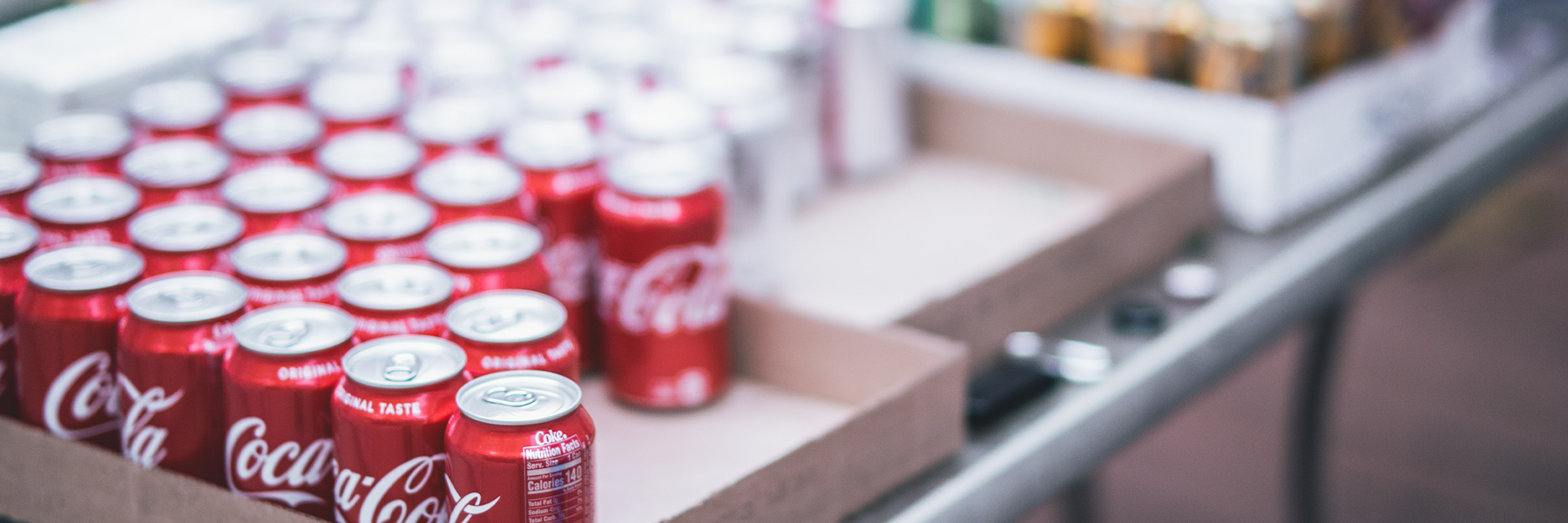Life of an Aluminum Can
Life of an Aluminum Can

Normally when we talk about a product having history, we are talking about the history behind it. It may be the story of how a beverage got its start or how the aesthetics of the packaging has altered to keep up with the changing times. When were are talking about a can of Coca-Cola however, the packaging itself is quite literally a piece of history. Because aluminum is so easily and efficiently recycled an astounding 75% of all aluminum ever produced is still in use today. In this installment of our two-part series about the lifecycle of our most common packaging materials, aluminum and PET plastic, we will take a closer look at how aluminum cans are manufactured, the benefits to using them, and what becomes of them afterwards.
Aluminum cans are by far one of the most sustainable beverage packages available today with a higher recycling rate and more recycled content on average than packaging alternatives. When it comes to the initial production of raw aluminum there are two different options: primary and secondary productions. Primary production is virgin material, brand-new aluminum that has been processed from bauxite ore. Secondary production is recycled material where scrap metal has been sorted and melted back down into ingots to be used once again. Aluminium is a very special material in that it is considered infinitely recyclable. This “miracle metal” can be processed into a product, melted down and reformed over and over again indefinitely without ever losing strength. Also the light weight, ease of stacking and relative strength of aluminum cans means that more final product can be safely distributed and results in reduced transportation costs and emissions.
The savings behind aluminum don’t stop after its initial manufacture. Because aluminum can be melted and cast over and over again without the additional of new material, it is described as being a closed loop recycling process. In fact a used aluminum can is able to be recycled and put back on shelves in as little as 60 days. In North America the average aluminum can will contain as much as 70% recycled content which is great news as it requires a mere 8% of the energy to produce aluminum cans from recycled materials versus new aluminum. Given all of this it is no wonder that scrap aluminum is one of the most valuable recyclable materials on the market. On average aluminum is worth as much as four times the value of PET per tonne, this difference makes municipal recycling programs financially viable in many cases and often allows scrap aluminum to effectively subsidize the recycling of other materials.
Here at Coca-Cola we’re working with our suppliers and encouraging consumers to recycle their aluminum cans. By working together to keep aluminum out of landfills, we can reduce the need for new aluminum production which can have a significant impact on the environment. By far the single greatest contributor to CO2 emissions from the primary production of aluminum is the electrolysis process itself, the method that converts the transitional ingredients into aluminum. While the carbon footprint for production of one tonne of new aluminum has gone down as a whole by 35% since 1995, finding alternative energy sources for primary production is still one of the biggest environmental challenge facing the aluminum industry. By working to keep aluminum cans in a closed recycling loop, we are all able to take a great step towards a more sustainable packaging future.